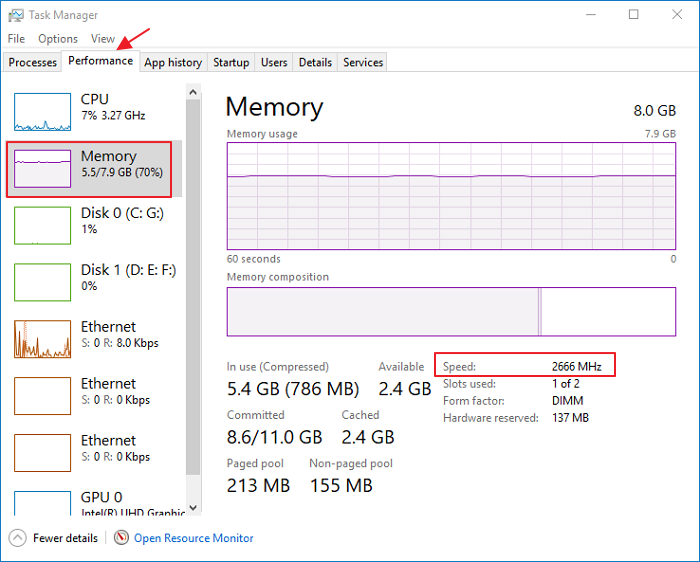

When this happens, you might find you notice to wait for apps to reload when you switch back to them. Windows will terminate background processes and suspend apps to keep your foreground programs running. Consequently, an apparently high memory usage might not necessarily have a serious impact on your system. Windows 10 employs a variety of techniques to make the most of the memory that is available. There's no clear threshold that dictates when you should upgrade your RAM. The benefits aren't generally noticeable in everyday use, so we'd always recommend spending money on more RAM instead of faster RAM. Higher memory speeds, measured in MHz, offer small performance increases. This is displayed in the bottom-right of the window. In this example, it's 14.5 GB, or 45% of the available total.Ī further useful metric is the speed of your memory.


In addition, the screen shows you how much memory is currently in use. You can easily see how much RAM is inside your system by looking at the number displayed to the right of the "Memory" header – in this case, 32 GB. Next, click "Memory" in the pane on the left. Click the "Performance" tab at the top of the window. You can check how much is in your PC using Windows 10's Task Manager. Programs consume RAM while they're open, so multitasking with multiple apps requires you to have sufficient memory available. Your RAM (random access memory) is one of the major contributors to the overall performance of your PC.


 0 kommentar(er)
0 kommentar(er)
